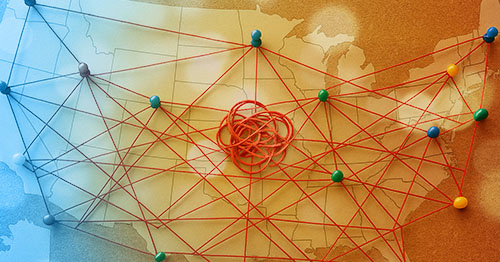
Navigating the Realities of Modern Data Collection in Litigation
July 21, 2025
By:
Summary: Learn about the most pressing data collection challenges for litigators at AmLaw 200 firms along with practical steps and workflows to help you manage data in platforms such as Slack and Google Workspace.
The explosion of mobile apps and cloud-based applications and platforms has transformed the way organizations communicate—and, in turn, how legal teams must approach data collection in litigation. What once involved traditional email servers and file shares now demands a nuanced understanding of encrypted messaging platforms, complex ticketing systems, and dynamic data sources that span across tools like Slack, Google Workspace, and Salesforce.
As legal teams take on more high stakes matters involving these tools, defensible, targeted collection strategies have become a cornerstone of successful eDiscovery.
During a recent roundtable discussion hosted by Lighthouse for AmLaw 200 litigators, eDiscovery and forensic experts explored some of the most pressing data collection challenges facing practitioners today, and how to address them with practical, repeatable workflows.
Here are some of the key insights that emerged.
1. Mobile messaging apps are a moving target
Mobile devices continue to pose unique collection challenges, particularly when custodians use third-party apps like WhatsApp, Signal, Telegram, or WeChat. Unlike desktops or laptops, mobile devices often can’t be fully imaged, and collections must be granular and app specific. This reality is compounded by frequent OS and app updates, which can render forensic tools ineffective with little warning.
Secure apps like Signal, for example, may require on-site, full-file-system collection with specialized tools. Even then, success often depends on factors like app versioning and device compatibility. To address these issues, experts discussed the importance of using controlled devices and backup-based workflows, which provide more consistent environments for repeatable collections.
2. Remote collection tools offer promise (with limits)
There’s growing interest in remote collection tools that allow targeted data capture without needing physical access to a device. However, third-party tools still have coverage limitations, particularly for encrypted or third-party apps. Advanced filtering by thread or date is becoming more common but remains limited.
3. Ticketing systems require API-driven solutions
Corporate ticketing platforms like Jira, Confluence, and Salesforce often hold critical structured data tied to case facts. But collecting this data for eDiscovery can be difficult due to the customization of these systems. Built-in export features may fall short, requiring the use of third-party tools that connect via API.
4. Slack and Google Workspace present hidden complexity
Cloud-native communication platforms like Slack and Google Workspace are increasingly common in litigation, yet both present significant eDiscovery challenges. With Slack, for example, the method and completeness of collection depend almost entirely on the organization's license level. Enterprise Grid accounts provide access to Slack’s Discovery API, allowing targeted collections of channels and direct messages, along with metadata and attachments. Lower-tier licenses offer only full JSON exports, which can be incomplete or difficult to review without custom processing.
In Google Workspace, collection limitations are more subtle but equally important. Google Vault does not preserve folder structures or version history in its exports. This can lead to surprises in downstream review, particularly when dealing with collaborative document environments. Third-party tools can be used to fill these gaps, though they introduce their own trade-offs, such as potential over-collection or inflated data volume.
5. Cross-platform links are easy to miss without custom workflows
Many modern organizations use a combination of tools such as Slack for communication, Google Drive for document storage, and Gmail for correspondence, for example. While that setup is convenient for users, it creates headaches for legal teams. For example, a Slack message might include a link to a Google Drive file, but a standard Slack export will not include the content of that linked file. Without a coordinated collection approach, these documents may appear “missing” during review.
To overcome this, legal teams must implement custom workflows that identify linked content, extract document IDs, and match them with appropriate message threads, timestamps, and custodian permissions. While feasible, this approach requires careful coordination and platform-specific knowledge.
Practical takeaways for legal teams
The roundtable discussion reinforced several best practices for legal teams working with modern data types.
- Scope early and often: Identifying data sources, custodians, and app versions at the outset is essential to building an effective, defensible strategy.
- Expect volatility: Mobile OS and app updates can instantly change what’s possible in a collection, making flexibility and redundancy in tools critical.
- Choose tools wisely: Third-party tools can streamline cloud-based collections but are only effective when paired with the right licensing and platform expertise.
- Watch for downstream impacts: Poor collection choices can inflate review volume, obscure relevant content, or create defensibility risks later in the process.
- Link the dots across platforms: Establishing relationships between messages and documents—even when they span Slack and Google Drive—is increasingly necessary to present a full picture in litigation.
As collaboration technologies continue to evolve, legal teams’ approach to data should too. By understanding the intricacies of each platform (and the limitations of off-the-shelf tools) litigators can better navigate the modern eDiscovery landscape with confidence and clarity.
To learn more about how Lighthouse can help litigators handle modern data, visit our digital forensics page.









